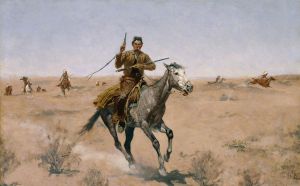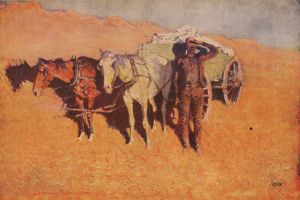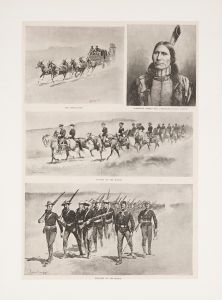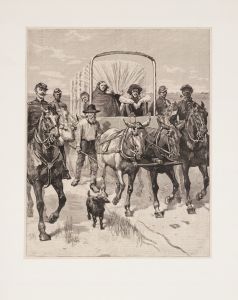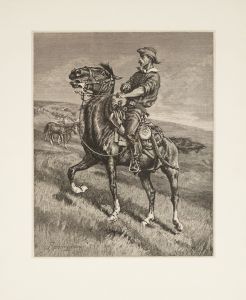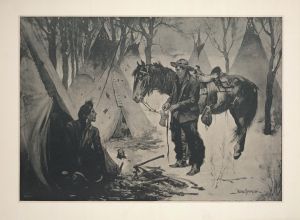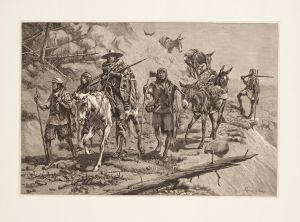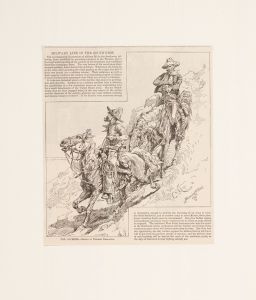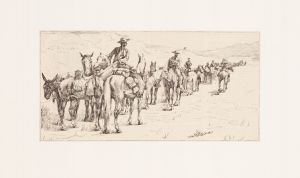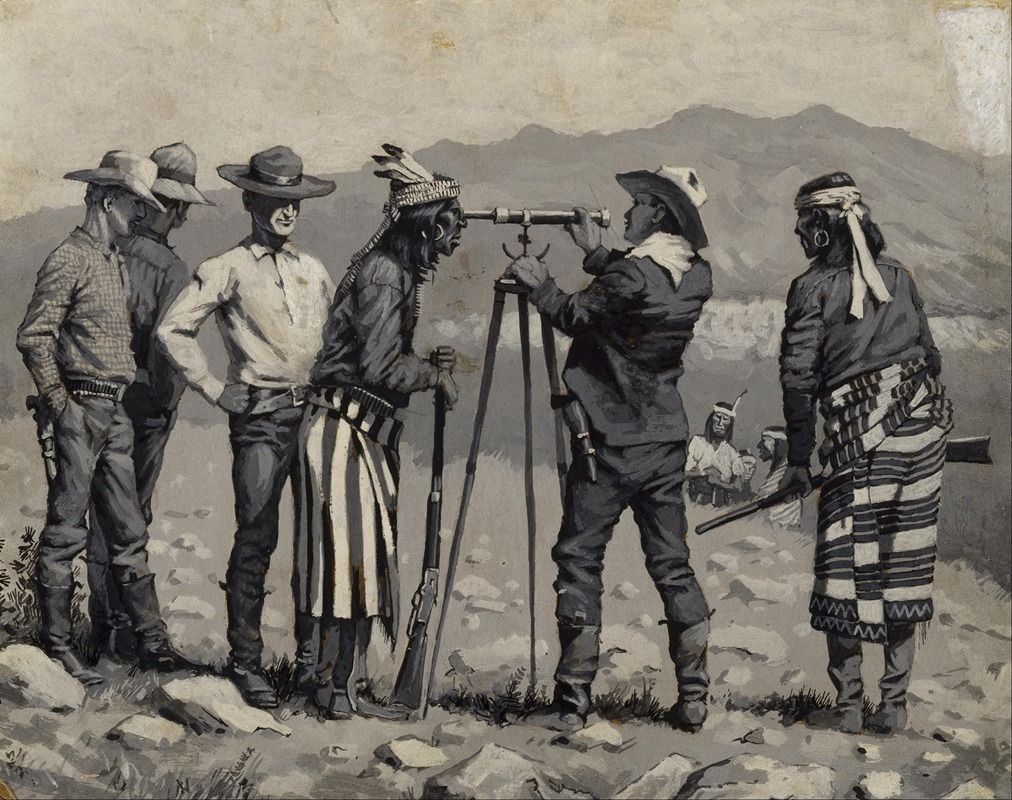
Looking Through the Telescope
A hand-painted replica of Frederic Remington’s masterpiece Looking Through the Telescope, meticulously crafted by professional artists to capture the true essence of the original. Each piece is created with museum-quality canvas and rare mineral pigments, carefully painted by experienced artists with delicate brushstrokes and rich, layered colors to perfectly recreate the texture of the original artwork. Unlike machine-printed reproductions, this hand-painted version brings the painting to life, infused with the artist’s emotions and skill in every stroke. Whether for personal collection or home decoration, it instantly elevates the artistic atmosphere of any space.
Frederic Remington, an iconic American artist known for his depictions of the American West, created numerous paintings, sculptures, and illustrations that captured the essence of frontier life. However, there is no widely recognized painting titled "Looking Through the Telescope" attributed to Frederic Remington. Remington's body of work primarily focuses on themes such as cowboys, Native Americans, cavalry soldiers, and the rugged landscapes of the American West during the late 19th and early 20th centuries.
Remington was born on October 4, 1861, in Canton, New York, and he developed an early interest in art and the American frontier. He attended the Yale School of Art but left before completing his degree. His fascination with the West led him to travel extensively throughout the region, where he gathered inspiration and material for his artwork. Remington's firsthand experiences and observations of Western life greatly informed his artistic style and subject matter.
Throughout his career, Remington worked in various mediums, including oil painting, watercolor, and bronze sculpture. His illustrations were frequently published in popular magazines of the time, such as Harper's Weekly and Collier's, helping to shape the public's perception of the American West. Remington's work is characterized by its dynamic compositions, attention to detail, and ability to convey movement and emotion.
Some of Remington's most famous works include paintings like "A Dash for the Timber" (1889), which depicts a group of cowboys on horseback fleeing from an ambush, and "The Fall of the Cowboy" (1895), which captures the changing landscape of the West as the era of the cowboy began to wane. His sculptures, such as "The Broncho Buster" (1895), also gained significant acclaim and remain iconic representations of Western art.
While Remington's art often romanticized the West, it also provided a visual record of a rapidly changing period in American history. His work has been both celebrated for its artistic merit and critiqued for its portrayal of Native Americans and the mythologizing of frontier life.
Despite the absence of a specific painting titled "Looking Through the Telescope," Remington's influence on American art and culture is undeniable. His legacy endures through his contributions to the depiction of the American West, and his works continue to be studied and appreciated for their historical and artistic significance.
For those interested in exploring Remington's art, many of his works are housed in prominent collections, including the Frederic Remington Art Museum in Ogdensburg, New York, and the Amon Carter Museum of American Art in Fort Worth, Texas. These institutions offer valuable insights into Remington's life, artistic process, and the broader context of his work within American art history.





